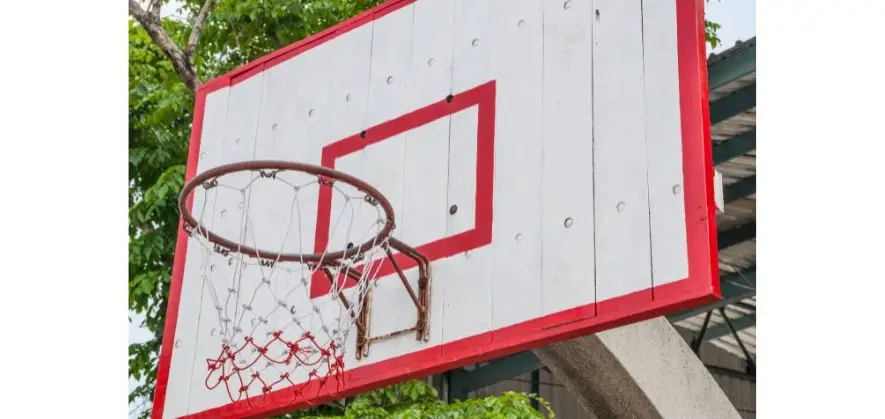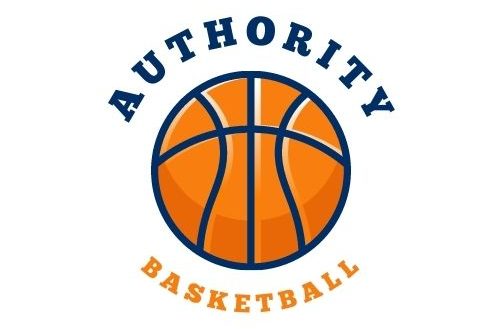In any business or industry, there is always a demand for quality products at competitive prices.
In the world of sports equipment, this holds true especially when it comes to basketballs.
The average person can throw up their hands and say “I’m outta here” after seeing how costly they have been on occasion.
There are many factors involved with these high costs but in general, you will find some common threads running through them all.
In this article, we explain why basketball hoops tend to be so pricey.
Here’s a quick summary…
Basketball hoops are typically quite expensive because of factors that include larger hoop and backboard sizes; premium backboard materials that offer superior ball rebound; weather resistant construction and portability that allows for these hoops to be transported easily.
- Reasons why basketball hoops don’t come cheap
- 1. Larger hoop sizes
- 2. Backboard materials that offer superior rebound
- 3. Bigger backboards
- 4. Heavy duty construction to withstand rust and deterioration
- 5. Portability that allows for frequent transportation
- How much does a good basketball hoop cost?
- Final thoughts
Reasons why basketball hoops don’t come cheap
The aforementioned reasons are the major causes for why basketballs are so expensive, so read on for detailed explanations of why this is the case.
1. Larger hoop sizes

The first thing people notice about basketball hoops is their large size (or width).
Many consumers want something big enough to fill up an entire backyard court, while others may only need a single-tether pole model to take advantage of smaller spaces.
Either way, having a larger diameter helps achieve better bounce performance.
If your goal is to get the most bang from each buck, then consider going with a bigger size as opposed to one that is too small.
Larger hoops are generally more expensive because to purchase because they’re more challenging to shoot into.
This is reflected by the real-life price ranges of different hoop sizes, where you can expect to get a three-foot diameter hoop from as low as $500.
And on the higher end of the price spectrum, a 10-foot diameter hoop can cost as much as $5000!
As such, if you’re looking into purchasing a basketball hoop, make sure you know exactly what kind of space you intend on filling before making a final decision on which product to buy.
You’ll save yourself time and money if you choose wisely.
2. Backboard materials that offer superior rebound

Basketball players who desire more control over ball handling should look for models that feature a thicker backboard surface.
These types of backboards provide extra support for the player during those crucial moments where he needs to perform well under pressure.
You see, the backboard material of a basketball hoop generally determines how well the ball will bounce off of the board when it rebounds.
A sturdy backboard material will give the hoop the overall balance it needs to keep steady even when a powerful shot is hit against the backboard surface.
On the other hand, lighter weight backboards allow less room for error because they lack sufficient strength to absorb heavy impacts.
A good rule of thumb is to check whether the manufacturer uses tempered glass or polycarbonate backboards.
Tempered glass tends to be thicker than polycarbonate due to its ability to resist breakage even after being struck numerous times.
It’s used in the making of basketball hoops that professional players use as it offers a level of bounce that’s directly proportional to the spin.
What this means is that when the ball hits the backboard, a nearby player can easily predict the rebound direction of the ball before it lands on the ground.
Polycarbonate is much thinner and cheaper than tempered glass but lacks durability since it doesn’t handle impact as well.
In fact, polycarbonate backboards offer a seriously compromised rebound and they deaden the speed of the ball once impact with the backboard surface is made.
And that isn’t good for players!
However, both backboards come with their own pros and cons.
Tempered glass ones are great but because they offer superior rebound and help to simulate a professional match environment, they tend to cost a pretty penny.
You’ll find that most retail stores stock this type of hoop at around the $1000 mark, although that figure could rise as high as $15,000 depending on the level of play.
The polycarbonate ones are cheaper but they’re a bit more durable as they can withstand the impacts that come with inaccurate shots and dunking during games.
Polycarbonate glass basketball hoops typically come in the $300 to $2000 range.
3. Bigger backboards
The size of the backboard is also a factor when it comes to how expensive a basketball hoop will cost.
Larger backboards provide a wider target for players to aim for, and because they can practice shots of differing variety, manufacturers put the price up on these models because they offer lots of flexibility with regard to how players can train.
Ultimately, the larger-sized backboards give a more realistic basketball experience, and that is definitely reflected in the higher price point of these hoops.
4. Heavy duty construction to withstand rust and deterioration

When choosing a basketball hoop, you don’t want to settle for anything less than long term weatherproofing.
Whether you live in warmer climates or colder ones, chances are great that rain, snow, sleet, hail, fog, heat, cold, humidity, windy conditions, etc., could affect the longevity of your new toy.
Most manufacturers do not build their products with this type of weather exposure in mind.
Instead, they opt to go with inferior components that cannot withstand these elements.
Fortunately, better materials now exist that prevent rust and corrosion while providing better stability against outside forces like moisture.
Furthermore, durable steel frames help protect boards from damage caused by car doors slamming shut.
All things considered, buying a basketball hoop that lasts longer means spending a little bit more upfront.
But think about it…can you afford to lose your investment just because you were careless?
Probably not!
5. Portability that allows for frequent transportation
Buying a portable basketball hoop requires knowing that you will probably end up moving it around quite frequently.
After all, unlike courts, they aren’t installed permanently in place.
Therefore, portability is another major consideration when selecting a basketball hoop.
While most units weigh approximately 200 pounds, you might want to avoid heavier weights altogether if possible.
Lightweight models also require fewer workers to move them around whereas those weighing hundreds of pounds usually require two men plus a dolly.
Not to mention, transporting bulky pieces involves more risk of breaking or falling apart.
Therefore, keep in mind that hoops built with portability in mind are typically more expensive because they’re optimized for regular transportation.
In terms of design, these hoops will have folding capabilities that manufacturers will factor in to the price due to the engineering skill needed to make this piece of gear function in such a specific way.
How much does a good basketball hoop cost?
Ultimately, the price range for a solid basketball hoop can vary quite considerably.
Because of factors like the materials that go into their construction, not to mention the different sizes that are available on the marketplace, it’s difficult to actually pinpoint a specific price point.
Nonetheless, you can expect to shell out as little as $100 for a nicely functional basic hoop to well over $2000 for a premium model that’s built to professional specification.
Final thoughts
If you’ve internalised the information written above, you won’t ever regret getting a higher quality basketball hoop.
Remember, you pay for what you receive!
Before you leave, you can have a look at some of our other articles like:
- Our post on what basketball the NBA uses;
- Why basketball hoops have springs in them;
- Why basketball hoops are orange in color; or
- Why basketballs lose air pressure over time
Happy reading!
- The Most Popular Prop Bets Made During the NCAA Final Four Tournament - February 9, 2024
- Evaluating the Enigma: Does LeBron James Possess a No-Trade Clause? - May 16, 2023
- Gravity’s Dance: Unveiling the Art of Bouncing Basketballs - May 16, 2023
